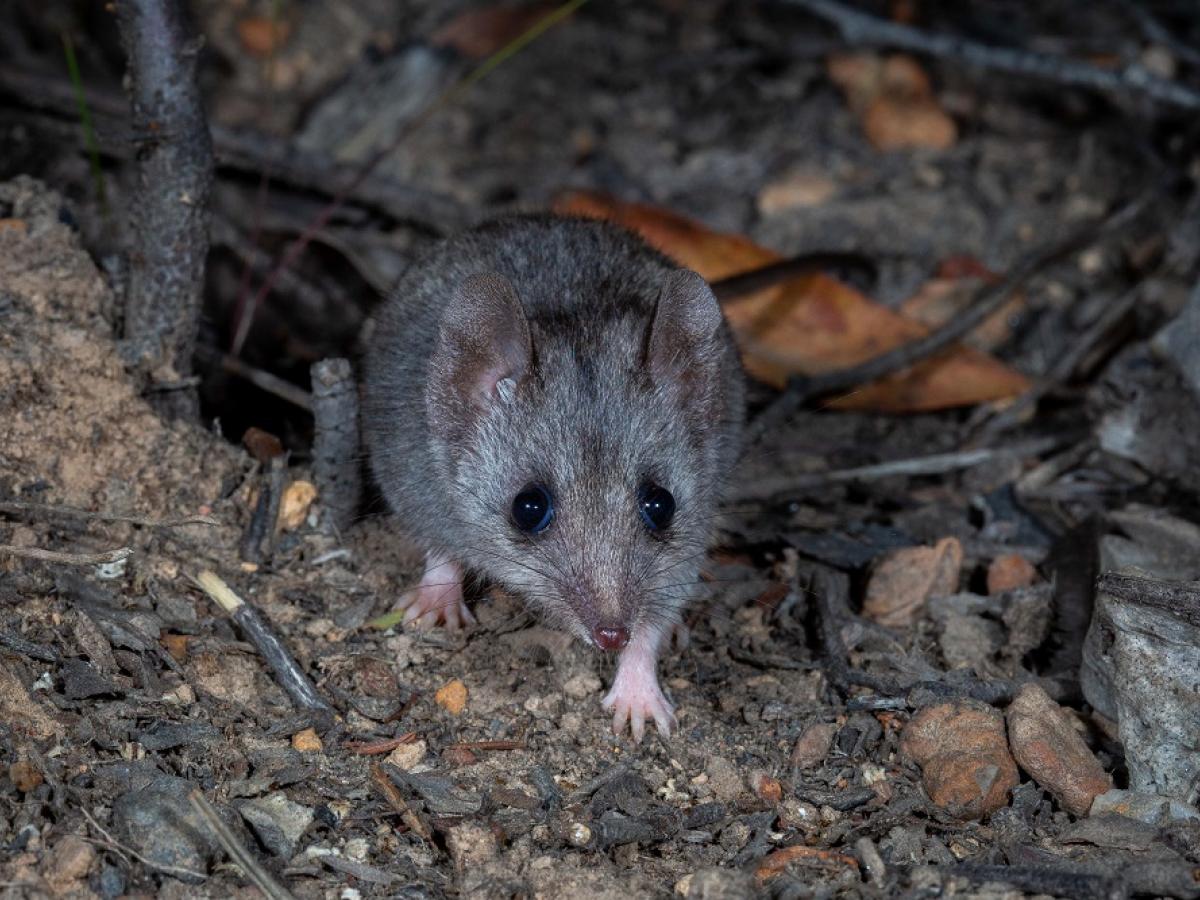
The critically endangered Kangaroo Island dunnart. Photo: Brad Leue/Australian Wildlife Conservancy.
A study involving researchers from the University of Adelaide has found that feral cats are putting the critically endangered Kangaroo Island dunnart - a small, mouse-sized marsupial found only on Kangaroo Island - to the brink of extinction.
Less than 500 Kangaroo Island dunnarts were estimated on Kangaroo Island before the 2019-20 bushfires. More than 98 per cent of the dunnart's habitat was severely burnt during these fires.
The researchers assessed the stomach contents and digestive tracts of 86 feral cats that were captured between February and August 2020.
The remains of eight individual Kangaroo Island dunnarts were found in the digestive systems of seven different cats. All cats were captured as part of the national feral cat control program and were euthanised in accordance with South Australia animal welfare laws.
Senior author, Louis Lignereux from the University of Adelaide's School of Animal and Veterinary Sciences, said the study highlighted the urgent need to protect vulnerable species from feral cat protection, especially following natural disasters such as bushfires.
"These findings represent the first confirmation that feral cats do prey on Kangaroo Island dunnarts and suggest they are efficient hunters of this species given the small numbers of dunnarts that remain following the bushfires," Dr Lignereux said.
"Bushfires concentrate predators and their prey in areas that are spared from the flames, so controlling the stray cat population in areas potentially inhabited by dunnarts was important.
"The combined pressures of a small, isolated population, natural disasters like bushfires, and introduced predators such as feral cats could lead to the extinction of this vulnerable species."
"The combined pressures of a small, isolated population, natural disasters like bushfires, and introduced predators such as feral cats could lead to the extinction of this vulnerable species."Dr Lignereux, School of Animal and Veterinary Sciences, The University of Adelaide






